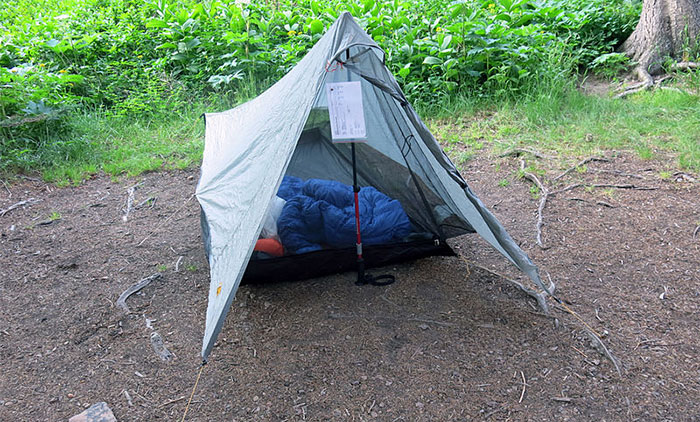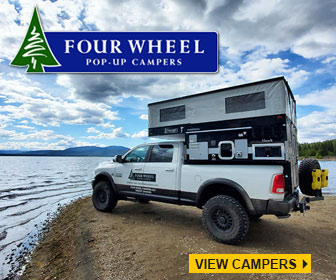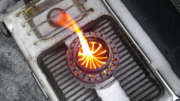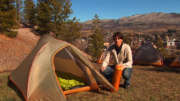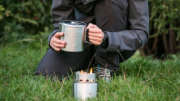Not long ago it was common for a backpacker to carry a 65 liter pack loaded with 50, 60, even 70 pounds of gear. When Chris Lundy, the owner of Sawtooth Mountain Guides in Stanley, Idaho, jokes that what a lot of people think about as “suffering” in hiking and backpacking activities is really thinking about carrying a heavy pack like those carried in the 60s and 70s and on up until the 90s. In the 90s modern materials and ultralight backpacking outdoor gear helped usher in a new era of thinking about hiking and backpacking from “more is better” to “less is more”.
Lundy says, ”Outdoor gear is moving toward lightweight. That’s what people are really looking for these days. We live in an amazing time where pack weight is thirty or forty pounds less than when people were doing this stuff in the seventies.”
Why Go Ultralight?
A lot of the trend in going light is the idea of placing more emphasis on the hiking part of backpacking in contrast to the camping part of backpacking. In addition, going light is:
- Better for your body. Less strain on ankles, knees, shoulders, and everything else
- If you are a hiker you can cover more miles each day
- It is simpler. It is more about the experience and less about the gear
What is the Big Three of Ultralight Backpacking?
The Big Three of Ultralight Backpacking are:
- Your backpack
- Your sleeping bag and sleeping pad
- Your tent or other shelter.
Shoot for three pounds each for the Big Three, or a combined weight of nine pounds.
How Much Does an Ultralight Backpack Weigh?
Outdoor Gear Lab, one of the most respected gear testing websites on the Internet, defines “lightweight” as 20 pounds or less in your backpacking kit, not including food or water. OGL considers a base weight of 12 pounds to be “ultralight” backpacking. Their lead tester carries a 13-pound base weight in winter than includes a few “heavy” luxury items. Most of their ultralight testers shoot for a 3-season base weight of around 7 to 9 pounds.
What are Bear Canisters and How Do They Impact Ultralight Backpacking?
Bear canisters are food containers that keep food and other scented items protected from bears, raccoons and other animals you may encounter on the trail that are interested in your food. Carrying a bear canister is going to have an impact on both the volume of the pack you choose, and weight of your pack. Bear canisters are required on sections of the John Muir and Pacific Coast trails and on at least one section of the Appalachian Trail in Georgia.
Check with the park or natural area you’re hiking in to learn the requirements for bear canisters before backpacking. Examples of bear canisters that you can view on Amazon include the Backpacker Food Cache Bear Canister, and the Bear Vault.
Cuben Fiber
Cuben fibers are the strongest fibers in the world, up to 15 times stronger than high-quality steel on a weight for weight basis, yet they still float on water, are extremely durable, don’t stretch, are waterproof, and resistant to ultraviolet light and chemicals. The material has been successfully adapted for manufacturing outdoor backpacking gear including backpacks, tents, tarps, stuff sacks and backpack rain covers.
Ultralight Backpacks
Most people prefer a pack that holds a little more gear than they actually need. An oversize pack allows you to go with the seven to nine pounds for three-season hiking but scale up to 13 pounds for winter. Here are five ultralight backpacks consistently recommended by a cross section of outdoor gear reviewers and gear testers.
Ultralight Backpacking Tents
As anyone who’s ever backpacked , every pound you can save is like a gift from Heaven. There are some tent options today that would allow me to cut this weight in half, offering more room and doing so at a reasonable price. Here’s some of the best 3 season, 2-person ultralight backpacking tents available that come in with a packed weight under 3 lbs.
Wood Burning Backpacking Stoves
Using a wood burning backpacking stove eliminates the need to carry fuel, saving you weight. With a wood burning backpacking stove, you build a fire with twigs or branches or frugal amounts or some other combustible inside a small fire chamber. Air is drawn up through holes in bottom of the stove and flows through the fire chamber, creating an intense heat on the bottom of the cooking vessel. You can also build your own DIY backpacking stove.

